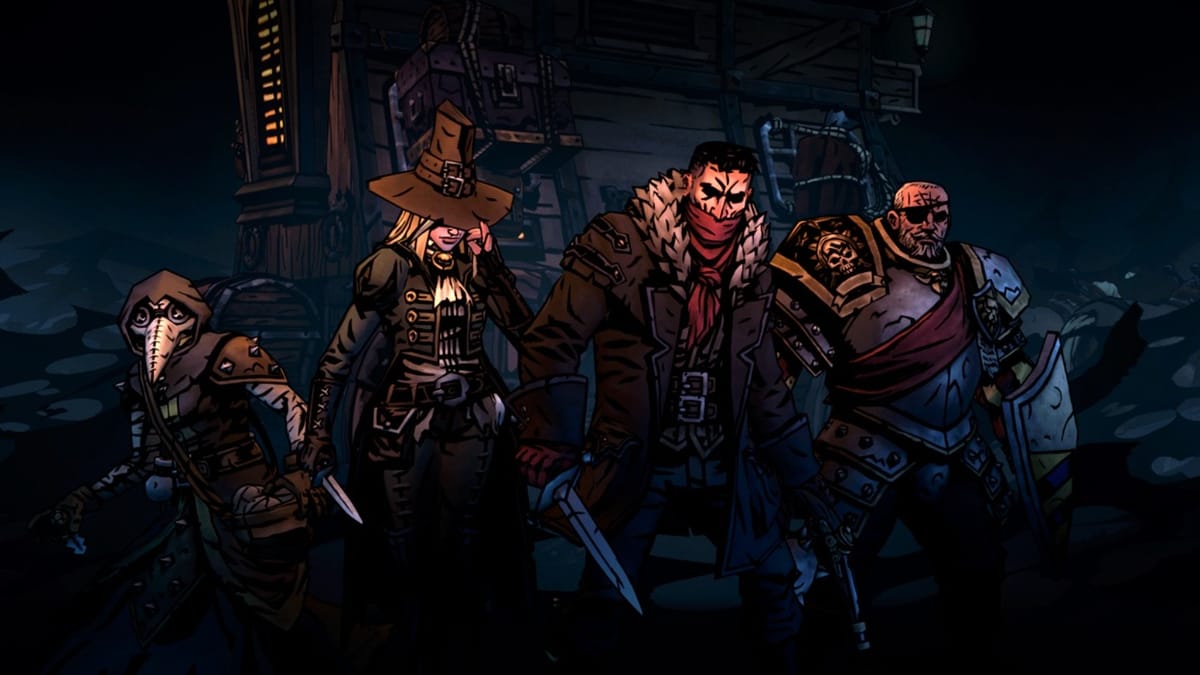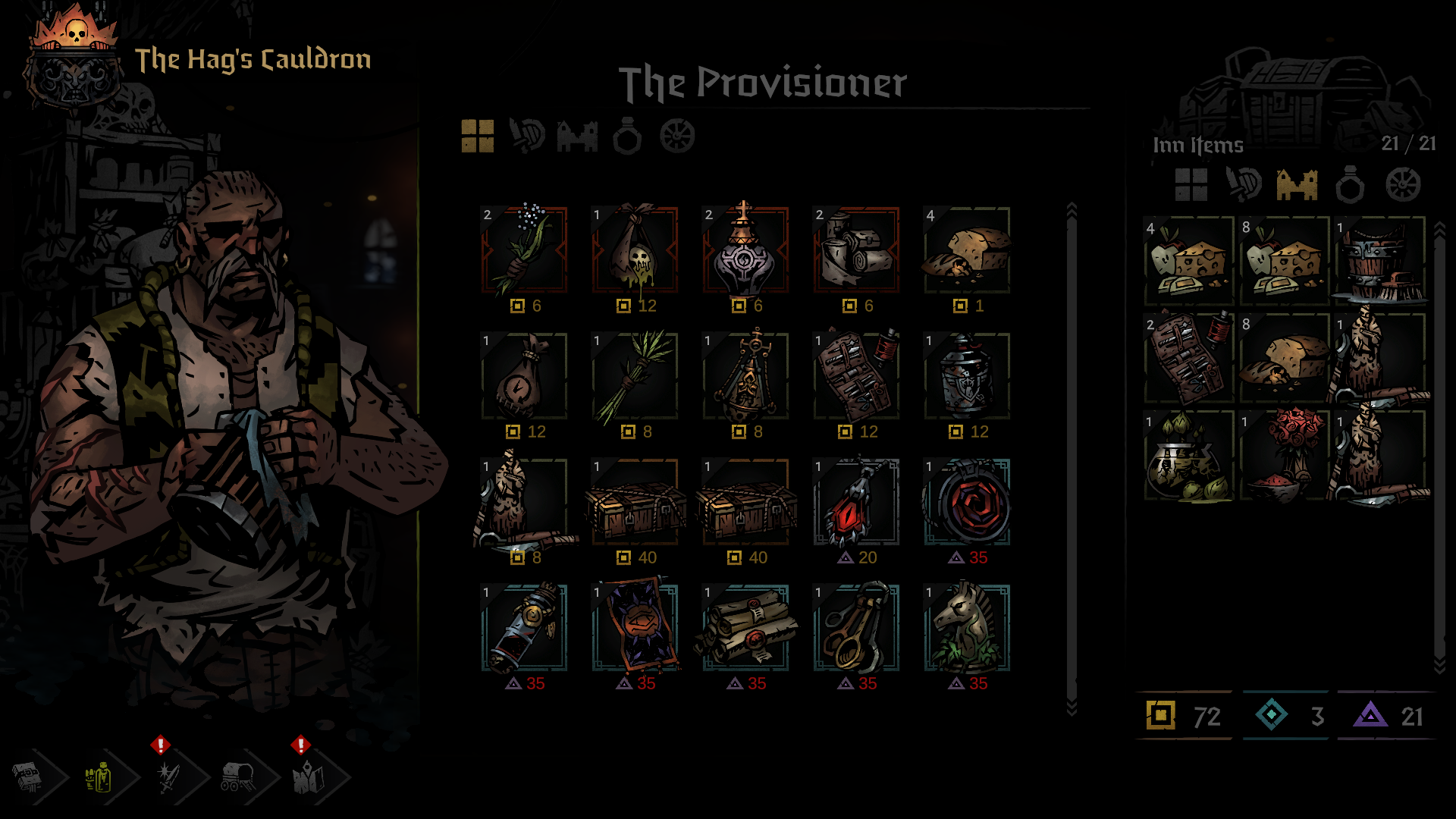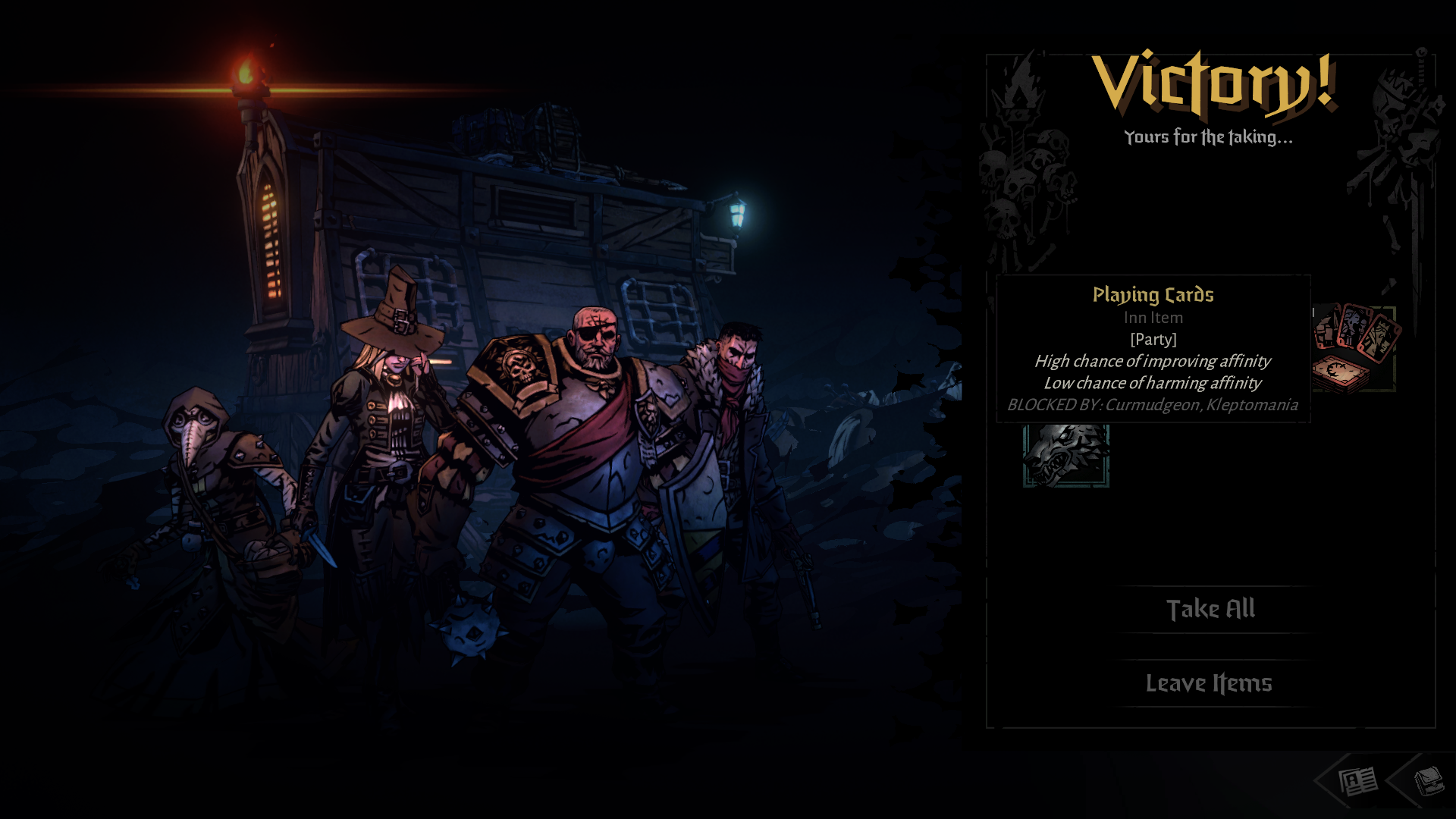
I absolutely adored the first Darkest Dungeon. I was writing my dissertation at the time, which was based upon the works of H.P Lovecraft, so I was naturally drawn to the mixture of gothic and cosmic horror that Darkest Dungeon was so clearly striving for. Everything from the over-the-top, unreliable first person narrator, the hauntingly decrepit town of Hamlet, the grotesque eldritch enemies, to the way the theme of insanity was delivered through gameplay made me fall in love with Darkest Dungeon immediately.
From the outside looking in, Darkest Dungeon 2 looks very similar to its predecessor. It has the same instantly recognizable art-style that Red Hook has so masterfully achieved, many of the same characters from the first game, and a similar approach to the strategic, turn-based combat. Load up the game, however, and you will immediately realise that while the DNA is comparable, Red Hook has taken a completely different approach to the design of Darkest Dungeon 2, and while that does come at a cost, I’m overall extremely happy with it.
Darkest Dungeon 2 is more than a sequel as it represents a significant switch in design philosophy. Most successful sequels tend to refine, develop, and improve features found within the first game, and while Darkest Dungeon 2 definitely does that in some areas, it’s ultimately a different beast. Indeed, Red Hook has bravely chosen to abandon many of the RPG elements that characterised the first game, such as the town management, roster management, campaign, and storytelling in favour of a true rogue-like experience. If we consider the first game to be an RPG with rogue-like elements, then Darkest Dungeon 2 should be classified as rogue-like with RPG elements.
That’s right, Darkest Dungeon 2 is a game of ‘runs’. A big departure from the previous installment, the goal of each run is to make your way through various biomes towards a mountain that towers omnipresently in the distance in order to defeat the horrors that lie within. Once your party is defeated, you are placed right back at the beginning to attempt the run again with a clean slate.
Each run begins the same way. You start in the tutorial biome, ‘The Valley’, and are put in control of a stagecoach. You steer the stagecoach along a linear path rendered in a 3D world — already a large departure from the previous game that only featured 2D environments — and pick up your roster of four heroes for the journey ahead. There are a lot of familiar faces here, such as the Apothecary, the Highwayman, and the Grave Robber, as well as a new class: the Runaway. The familiar classes all share similar visual designs to those in the first game, although each is granted more unique stats as well as more abilities than before (many of which are unlocked over time, but more on that later). When starting out you only have the choice of 4 classes, more are unlocked through the game’s permanent progression system (again, more on that later).
From there, you will make your way towards an Inn; places of sanctuary that act as checkpoints between each biome. There is a lot to do at an nn, whether that be using Inn-specific items to heal your team or reduce stress, trading currency you accumulate throughout the run for combat items and trinkets, investing mastery points into skills to make them stronger, or upgrading your waggon for utility bonuses on your journey. The relief that Inns offer are the equivalent of bonfires in Dark Souls, the only glimmer of hope in an otherwise horrifically oppressive environment.
To complete a run, you must make your way through three biomes and overcome the Mountain at the end. Each biome has a unique environmental flavour as well as unique enemies to face, and each one requires different tactics to overcome. You are given a choice of two biomes to progress through after each Inn, and while there are only a handful at the moment (4, plus the Mountain), I’d expect a lot more to be added over time. This is where Darkest Dungeon 2 presents its first issue, as the lack of biomes means that runs can begin to feel repetitive early on from an aesthetic point of view. This, of course, will only improve over time, and I think if Red Hook could double (or dare I say, triple!) the amount of biomes for the full release, there would be a big enough pool to make each run feel different. Furthermore, the way biomes can easily be integrated into each run will make it easier for the developers to add DLC that can be accessed by everyone.
Completing a biome to reach the next Inn is no small feat. Upon beginning each biome, you are presented with a vertical map which outlines the possible routes you can take to reach the Inn. Biomes are all laid out the same way; a series of roads that are broken up by nodes. The roads are essentially the corridors from the first game, whereas the nodes are the rooms. With certain upgrades, passives, or items, nodes can be scouted so you know what you will be up against before you arrive. There is also a unique node, The Watchtower, that helpfully reveals every node in the biome you’re currently in. There are a good variety of nodes, including standard encounters, opportunities to help refugees in exchange for helpful items and flame for your torch, hospitals to heal your adventures, lairs that offer high-risk-high-reward encounters, and quite a few more. Choosing the road you take is a task in itself, as each node will provide both an advantage and disadvantage depending on the state of your party at the time. Furthemore, travelling down a road represented with a dotted line on the map guarantees an encounter on the road, where a solid line indicates the road is safe. Do you push along a dotted road for a dearly needed hospital, or do you take the safer route and hope for the best? Countless decisions like this one make regular appearances in Darkest Dungeon 2.
Staying alive in Darkest Dungeon 2 can be tough, and staying sane can be even harder (for both your characters, and at times, yourself!). The combat is quite similar to the previous game, it’s turn-based with the twist being that the formation of both your heroes and the enemies have a large impact on how each encounter will be played. Certain abilities can only be used if a character is towards the back of the line, while some abilities can only be used on enemies at the flank. Combat encounters generally consist of managing buffs and debuffs while keeping your characters alive and sane, and taking every opportunity you can to strike your opponent down. There are quite a lot of buffs and debuffs to get your head around, but thankfully a legend can easily be brought up by holding ‘G’ which helps getting to grips with it all a lot easier.
Managing your health and stress, both in and out of combat, is vital to the success of a run. If one of your characters dies that’s the end of them for that run. If you can make it to an Inn, their place will be filled by one of the available heros you have unlocked but didn’t pick at the beginning of the run. Stress, this time around, works quite a bit differently and feeds into one of Darkest Dungeon 2’s new systems, Affinity.
There are multiple ways that stress increases both inside and outside of combat. Enemy attacks can increase stress, as can suffering status effects, or even bickering with other companions. Hell, even travelling up a road a character doesn’t want to go up can increase their stress, and these are just a few examples. If a character’s stress reaches max, they will be immediately placed on low health and their Affinity will be lowered with the other companions. Affinity is the relationships your companions have with each other, and if it lowers to a certain threshold, characters will begin to grow suspicious of each other. If it continues to drop they will become resentful, then even hateful. The lower the Affinity gets, the higher the consequences. Your own characters might prevent their companions from using certain abilities, or even give them debuffs. It’s vital, therefore, to keep stress in check, as otherwise it will create an exponential degradation to your parties’ mental health, and will most likely cost you the run.
At the risk of being told to ‘Git Gud’, I’m not a fan of the way stress works in Darkest Dungeon 2. If RNG is against you, it can often feel far too difficult to manage. Furthermore, to effectively manage it between Inns, you are practically forced into upgrading skills that are designed to manage stress, which discourages exploring other builds and options. I’m also not a fan of the new Affinity system, as it can become frustrating when you are constantly reminded during combat that your characters hate each other. While the debuffs are annoying, so are the animations that play each and every time an Affinity scenario is triggered. It interrupts the flow of combat too much.
Affinity works the other way around, too. Companions can grow closer to each other, and with this comes helpful bonuses such as passive healing and damage mitigation. Perhaps I was playing the game wrong, but I rarely managed to get characters to like each other. Although I dislike the current state of Affinity, I do like the idea of it and with some balance maybe I could grow to enjoy it.
Switching focus to the companions themselves, there is a lot to love here. As mentioned earlier in the article, the vast majority of the characters make a return from the first game, and share the same DNA both aesthetically and mechanically. Each character has 5 abilities to begin with, and more can be unlocked through certain nodes you come across as you explore each biome. Once you unlock an ability, that ability is unlocked forever, staying with you between runs. It’s a great way of rewarding time invested in the game, as the more you play the more flexibility you unlock. Although the pool of abilities grows, you’ll only ever be able to have 5 active at one time, which encourages you to try out different combinations. This is emphasised by the fact that abilities can be rotated at any time in the run outside of combat, which gives you a ton of choice to plan and react to threats that come your way.
Abilities aren’t the only form of progression that carries over between each run. Each time you finish a run, you’ll be rewarded with Hope, which is Darkest Dungeon 2’s aptly worded version of experience. The better you do on a run, the more Hope you will receive. As you earn Hope you will level up your overall ‘profile’, and with each new level comes rewards that, as the term ‘Hope’ suggests, endeavour to make each run that little bit easier. You’ll essentially be rewarded with progressively more powerful — and interesting — items that have a chance of appearing on the loot table. Furthermore, unlocking new characters is also tied to your profile level. I’m really glad Red Hook decided to include this kind of meta progression; not only does it make each run feel rewarding, but also introduces new characters and items organically to the player to keep the experience fresh and prevent things from getting too overwhelming.
A lot of the changes made to Darkest Dungeon 2 are going to be subjective. Aside from the new way stress works and the frustrations of the Affinity system, I definitely fall into the category of loving the pick-up and play feel of it. I’m also excited to see where it goes in the future, as outside of a bit of balancing, the core game is solid and provides the perfect foundation to be built upon. Well done Red Hook, you took an enormous risk and I genuinely feel as though it has paid off.



